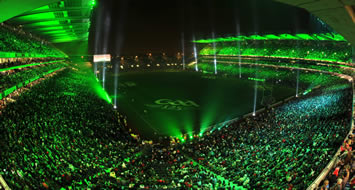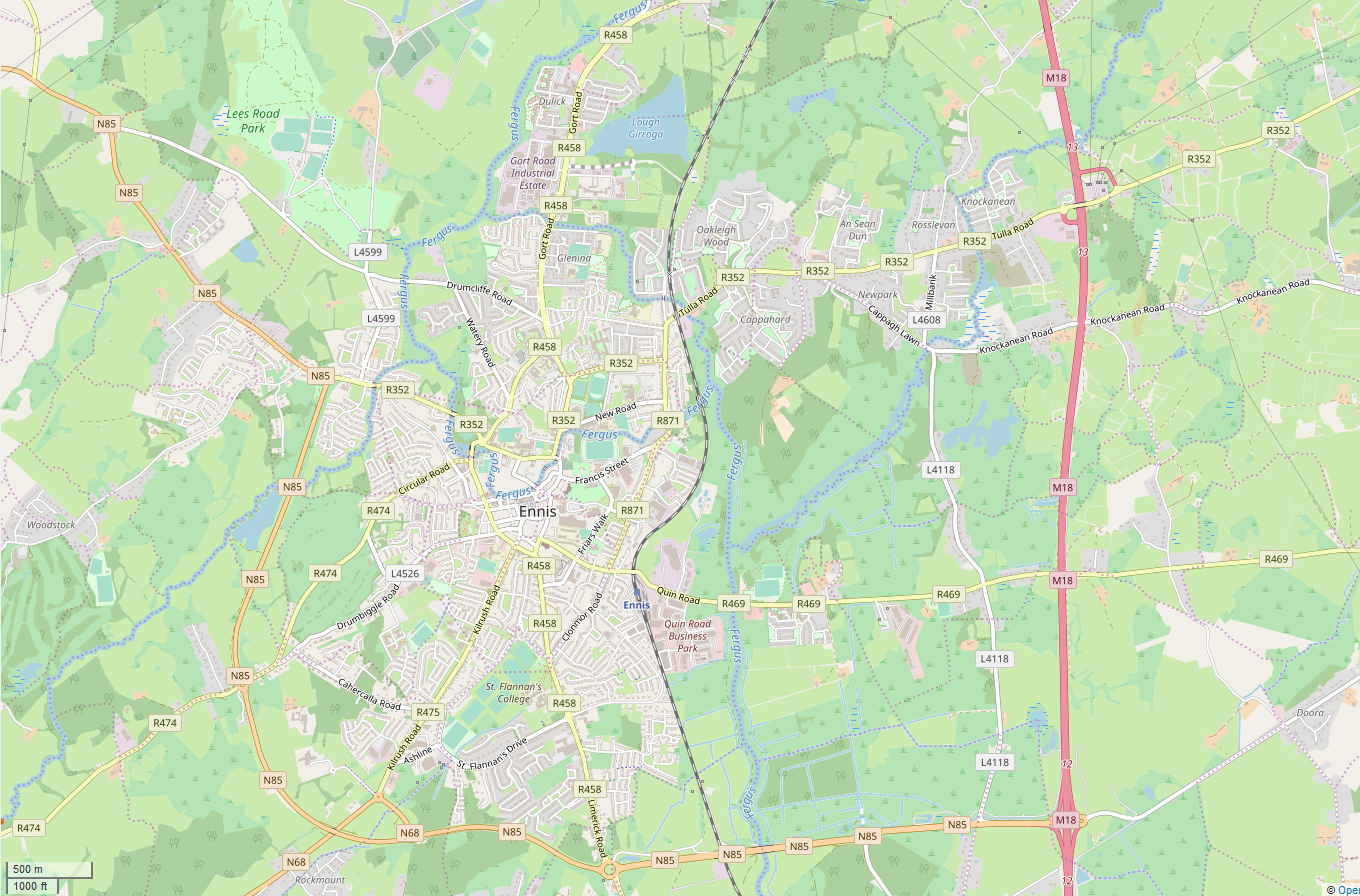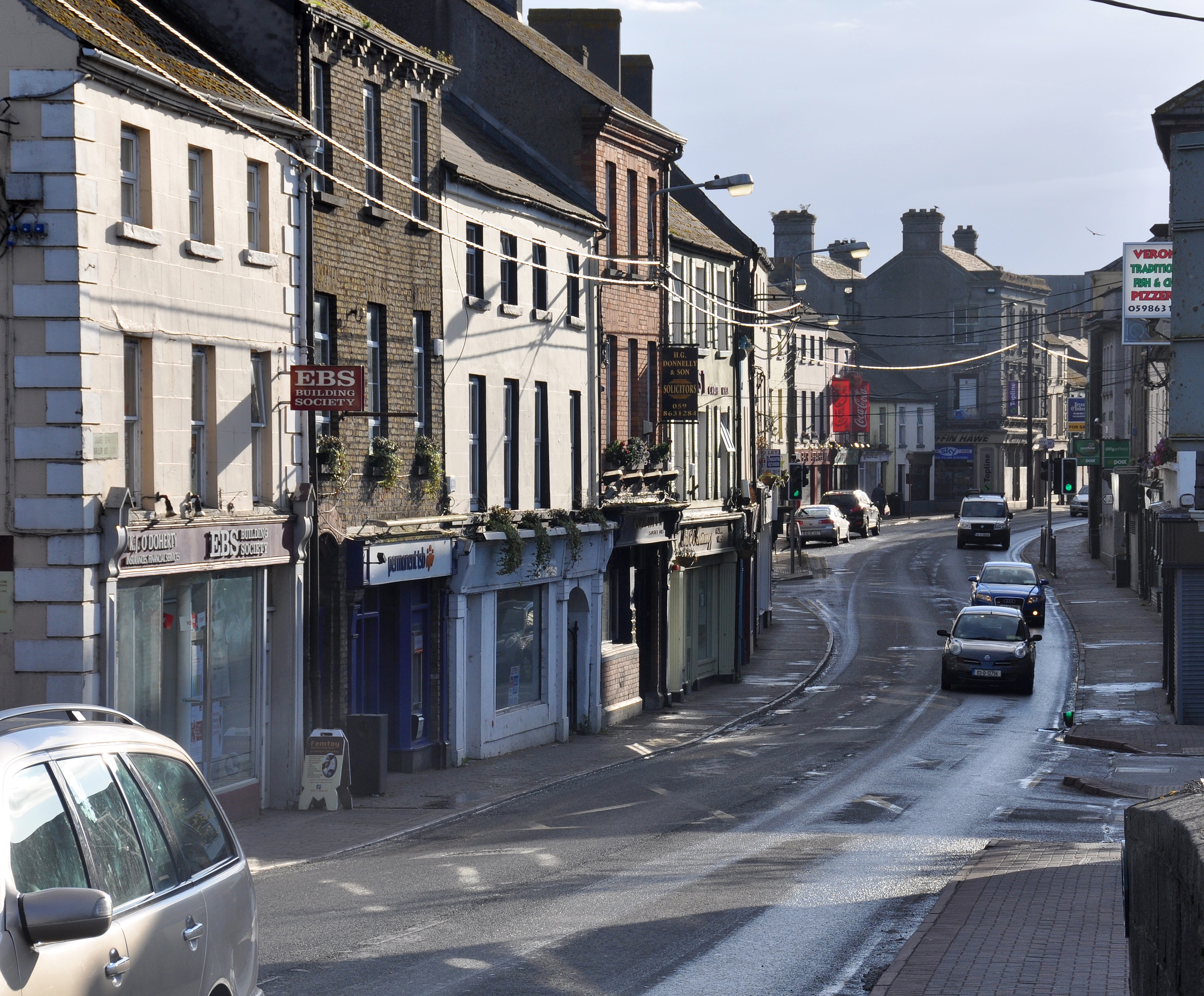|
Shinty–Hurling International Series
The Shinty/Hurling International is a sports competition played annually between the Ireland national hurling team (selected by the Gaelic Athletic Association) and Scotland national shinty team (selected by the Camanachd Association). The series is conducted according to the rules of shinty–hurling, which is a hybrid sport consisting of a mixture of rules from the Scottish sport of shinty and the Irish sport of hurling. The competition is currently sponsored by Mowi and is officially known as the Mowi Shinty/Hurling International. History The first known fixture between a Scottish shinty team and Irish hurling team occurred in 1896, when the London Scottish Camanachd Club and London GAA met in a friendly. The following year, the first official series featuring an amalgamation of rules from both sports, occurred at Celtic Park in Scotland between Glasgow Cowal and Dublin Celtic. International tests between all-Scotland and all-Ireland teams were played intermittently prior ... [...More Info...] [...Related Items...] OR: [Wikipedia] [Google] [Baidu] |
Composite Rules Shinty–hurling
Composite rules shinty–hurling () – sometimes known simply as shinty–hurling – is a hybrid sport of shinty and hurling which was developed to facilitate international matches between the two sports. Shinty–hurling is one of few team sports in the world without any dedicated clubs or leagues. It is currently played by both men's and women's teams only in tournaments or once-off internationals. The women's form of the game is called shinty/camogie. Rules The rules of the composite sport are designed to allow for neither side to gain an advantage, eliminating or imposing certain restrictions. The goals are those used in hurling, with 3 points for a goal (in the net under the crossbar) and 1 point for a shot over the crossbar. A stationary ball taken straight from the ground and shot over the crossbar scores 2 points. For the 2012 International Series, a goal became worth 5 points in an effort to increase the number of goals. This rule was abandoned for the 2013 ... [...More Info...] [...Related Items...] OR: [Wikipedia] [Google] [Baidu] |
Croke Park
Croke Park (, ) is a Gaelic games stadium in Dublin, Ireland. Named after Archbishop Thomas Croke, it is referred to as Croker by GAA fans and locals. It serves as both the principal national stadium of Ireland and headquarters of the Gaelic Athletic Association (GAA). Since 1891 the site has been used by the GAA to host Gaelic sports, including the annual All-Ireland finals in List of All-Ireland Senior Football Championship finals, Gaelic football and List of All-Ireland Senior Hurling Championship finals, hurling. A major expansion and redevelopment of the stadium ran from 1991 to 2005, raising capacity to its current 82,300 spectators. This makes Croke Park the List of European stadiums by capacity, fourth-largest stadium in Europe, and the largest not usually used for association football in Europe. Along with other events held at the stadium include the opening and closing ceremonies of the 2003 Special Olympics World Summer Games, 2003 Special Olympics, and numerous musi ... [...More Info...] [...Related Items...] OR: [Wikipedia] [Google] [Baidu] |
Pairc Esler
Park (), also known as South Lochs, is a huge area of land connected to the rest of Lewis only by a narrow neck between Loch Seaforth and Loch Erisort. This had a wall called ''Gàrradh an Tighearna'' (''"The Laird's Dyke"'') built across it by the Earl of Seaforth in the early 17th century, the outline of which can still be seen. Only the north of Park is now inhabited: settlements in the south were cleared by Sir James Matheson in the nineteenth century. A famous deer raid took place here in 1887 as a demonstration by starving people, commemorated by a broch resembling a cairn at the Eishken junction. Much of this area is still used for deer stalking. Community buyout The Pairc Estate extends to and includes 11 crofting townships with a combined population of nearly 400. In 2011 the Pairc Community Trust received approval from Roseanna Cunningham, the Environment Minister, for a bid to buy the estate under the crofting "Right to Buy" provisions of the Land Reform (Scotland) ... [...More Info...] [...Related Items...] OR: [Wikipedia] [Google] [Baidu] |
Ennis
Ennis ( , meaning 'island' or 'river meadow') is the county town of County Clare, in the mid-west of Ireland. The town lies on the River Fergus, north of where the river widens and enters the Shannon Estuary. Ennis is the largest town in County Clare, with a population of 27,923, making it the 6th largest town, and 11th largest urban settlement, as of the 2022 census. Dating from the 12th century the town's Irish name is short for , deriving from its location between two courses of the River Fergus. Ennis has had considerable success in the Irish Tidy Towns competition. In 2005 and 2021, the town was named Ireland's tidiest town, and was named Ireland's tidiest large urban centre on multiple occasions. The town straddles two baronies. Most of the town, including its historic centre, is in the Barony of Islands. However, the eastern and north-eastern edges of the town are in the Barony of Bunratty Upper. History The name Ennis derives from the Irish word "Inis", mea ... [...More Info...] [...Related Items...] OR: [Wikipedia] [Google] [Baidu] |
Cusack Park (Ennis)
Cusack Park (''Páirc Uí Chíosóg'' in Irish) is a GAA stadium in Ennis, County Clare, Ireland. It is the primary home of the Clare Hurling, Gaelic Football, Camogie and Peil na mBan teams at all grades. Named after the founder of the GAA, Michael Cusack, the ground had an original capacity of about 28,000 (mostly terraced), but following a 2011 safety review, the certified capacity was reduced to 14,864.Exclusive gaa teams up with council Clare People Three sides of the ground are terraced - the two areas behind the goals and one terraced length of the pitch which is also covered. In 2006 there were media reports of substantial offers from property developers to buy the stadium and relocate it to a new 42,000 capacity site outsi ... [...More Info...] [...Related Items...] OR: [Wikipedia] [Google] [Baidu] |
Athy
Athy ( ; ) is a market town at the meeting of the River Barrow and the Grand Canal in south-west County Kildare, Ireland, 72 kilometres southwest of Dublin. A population of 11,035 (as of the 2022 census) made it the sixth largest town in Kildare and the 45th largest in the Republic of Ireland, a growth of 82% since the 2002 census. Name Athy or is named after a 2nd-century Celtic chieftain, Ae, who is said to have been killed on the river crossing, thus giving the town its name "the town of Ae's ford". The ''Letters of the Ordnance Survey'' (1837) note that "The town is now called by the few old people who speak Irish there and in the Queen's County /nowiki>Laois">Laois.html" ;"title="/nowiki>Laois">/nowiki>Laois/nowiki>, , pronounced Blahéé", where ''éé'' stands for English 'ee' [i:] as clarified by a note written in pencil in Irish as ''Blá thí''. History According to Elizabethan historian William Camden, Ptolemy's map of Ireland circa 150 AD names the Rheban d ... [...More Info...] [...Related Items...] OR: [Wikipedia] [Google] [Baidu] |
Geraldine Park
Geraldine Park is a GAA stadium in Athy, County Kildare, Ireland. It is the main ground of Athy GAA's Gaelic football and hurling teams and has also hosted inter-county fixtures. History First rented from the Kildare Agricultural Society in 1905, Athy GAA grounds was quickly developed in order to stage the 1906 All-Ireland Senior Football Championship Final, the replay of the 1908 All-Ireland Senior Hurling Championship Final, the Leinster football finals of 1907, 1908, 1942 and 1944, and the Leinster hurling final of 1907. Geraldine Park was opened in 1930 and developed under the guidance of Fintan Brennan. It was also the venue for the 1975 All-Ireland Senior Ladies' Football Championship final. To the seating of the 1940s was added a stand in 1984. The dressing rooms, built in 1964 (now replaced), had a holy water font near the exit for use of teams running on to the pitch. Geraldine Park hosted the first leg of the Shinty/Hurling International Series in 2011, Ireland de ... [...More Info...] [...Related Items...] OR: [Wikipedia] [Google] [Baidu] |
Scotland
Scotland is a Countries of the United Kingdom, country that is part of the United Kingdom. It contains nearly one-third of the United Kingdom's land area, consisting of the northern part of the island of Great Britain and more than 790 adjacent Islands of Scotland, islands, principally in the archipelagos of the Hebrides and the Northern Isles. To the south-east, Scotland has its Anglo-Scottish border, only land border, which is long and shared with England; the country is surrounded by the Atlantic Ocean to the north and west, the North Sea to the north-east and east, and the Irish Sea to the south. The population in 2022 was 5,439,842. Edinburgh is the capital and Glasgow is the most populous of the cities of Scotland. The Kingdom of Scotland emerged as an independent sovereign state in the 9th century. In 1603, James VI succeeded to the thrones of Kingdom of England, England and Kingdom of Ireland, Ireland, forming a personal union of the Union of the Crowns, three kingdo ... [...More Info...] [...Related Items...] OR: [Wikipedia] [Google] [Baidu] |
Nowlan Park
Nowlan Park (; ), known for sponsorship reasons as UPMC Nowlan Park, is the principal Gaelic Athletic Association stadium in Kilkenny, Ireland. Named after James Nowlan, the longest serving President of the GAA, the stadium hosts major hurling matches and is home to the Kilkenny hurling team. It opened in 1927, replacing St. James Park. Facilities The stadium consists of the following stands: *Old Stand (O'Loughlin Road) mainly bench-seats (uncovered, planning for a new roof submitted after storm damaged the old roof in 2014) (The new roof completed in late 2014 and opened in early 2015) *Paddy Grace Stand (New Stand, Hebron Road) mainly bench-seats (covered) *Ted Carrol Stand (country end) 4,000 plastic seats (covered) *City Terrace (covered) The target capacity under the Kilkenny GAA 2010-15 plan was 30,000. A large portion of the Old Stand's roof was blown off during a violent storm on 12 February 2014. The rest was removed for health and safety reasons. Hurling History was ... [...More Info...] [...Related Items...] OR: [Wikipedia] [Google] [Baidu] |
Fort William, Highland
Fort William is a town in the Lochaber region of the Scottish Highlands, located on the eastern shore of Loch Linnhe in the Highland Council of Scotland. At the 2011 census, Fort William had a population of 15,757, making it the second-largest settlement both in the Highland council area and in the whole of the Scottish Highlands; only the city of Inverness has a larger population. Fort William is a major tourist centre with Glen Coe just to the south, to the east, and Glenfinnan to the west. It is the start and end of the Road to the Isles. It is a huge centre for hillwalking and climbing due to its proximity to Ben Nevis, the largest mountain in Scotland and the United Kingdom, and many other Munros. It is also known for its nearby downhill mountain bike track. It is the start/end of both the West Highland Way (a walk/cycleway, Milngavie – Fort William) and the Great Glen Way (a walk/cycleway, Fort William – Inverness). Around 726 people (7.33% of the popula ... [...More Info...] [...Related Items...] OR: [Wikipedia] [Google] [Baidu] |
An Aird
An Aird is both an area of Fort William, Scotland, and also the largest dedicated shinty park in the town and is situated on the east bank of Loch Linnhe, near the centre of the town. It is located next to the Nevis Centre. An Aird regularly hosts both the Camanachd Cup Final and the Composite Rules Shinty/Hurling Internationals and is considered one of the finest parks in shinty. It is home to Fort William Shinty Club's various squads who have played there since moving from Claggan Park in the 1980s. The capacity of the stadium is 5000, comprising a small stand which seats 400 and standing. It also has Fort William's clubhouse on the premises. Despite shinty's profile in the town, efforts are afoot to evict Fort William Shinty Club from An Aird, in order to build a supermarket. The local authority, Highland Council, have come under fire for their care of the park, especially after the playing surface was stripped bare by rabbits. The company behind the planned developmen ... [...More Info...] [...Related Items...] OR: [Wikipedia] [Google] [Baidu] |
Ratoath
Ratoath () is a commuter town in County Meath, Ireland. A branch of the Broad Meadow Water (Broadmeadow River) () flows through the town. The R125 and R155 roads meet in the village. At the 2022 census, there were 10,007 people living in Ratoath, making it the fourth largest urban area in Meath. The town is around northwest of Dublin city centre. Name Ratoath gives its name to a village, a townland, a parish, a civil parish, an electoral division and to the barony of Ratoath. The derivation or meaning of the word is uncertain. Two alternative Irish forms are cited: ''Ráth-Tógh'' and ''Ráth-Tábhachta''. These place names occur in Irish manuscripts and scholars say that the writers were referring to Ratoath; it seems that they were trying to give a phonetic rendering of a name that was unfamiliar to them. ''Mruigtuaithe'' occurs in the Book of Armagh as the name of one of these places in Meath where Saint Patrick founded a church and Eoin MacNeill identifies it as Ra ... [...More Info...] [...Related Items...] OR: [Wikipedia] [Google] [Baidu] |




